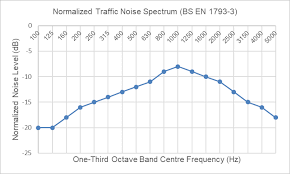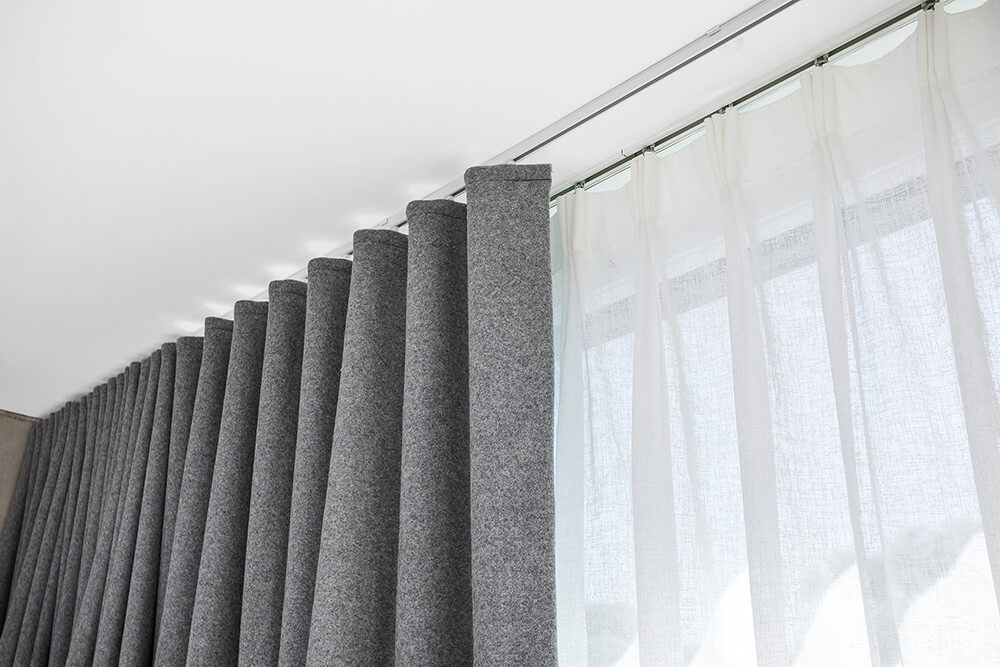Traffic noise isn’t just a nuisance, it’s bad for your health

Studies into the effects of traffic noise overwhelmingly arrive at the same conclusion – traffic noise can cause a wide range of health issues.
City-dwellers can often feel that there’s no escaping the constant drone of traffic. We dismiss the steady hum of traffic noise as an irritating and unavoidable part of living in a densely populated space.
But far from being a trivial annoyance, there’s increasing evidence to show that traffic noise is harmful to your health.
Exposure to traffic noise can cause irritation and sleep disturbances, the consequences of which can include tiredness, reduced cognitive skills and impaired judgement. It has also been linked to wider and more serious health issues such as hypertension (high blood pressure), cognitive impairment and diabetes. A study by the European Heart Journal says road traffic is a causal factor in a number of cardiovascular ailments and flags traffic noise as a major physiological stressor, second only to air pollution. 1
What do we mean by traffic noise?
Traffic noise is a combination of the noises produced by vehicle engines, exhausts and tyres, with most road noise coming from the sound of tyres contacting the road. The noise produced by passenger vehicles is dominated by frequencies around 1000Hz, while noise from heavy trucks generally sits in the 500 to 1000Hz range.

Traffic noise at any one time is affected by a variety of factors such as traffic volume, speed and number of trucks, gradient of the road, distance of the listener from the road and the presence of any shielding structures.
Noise levels vary from second to second and from day to night. But mandated limits exist to protect the health of the community. The Australian national standard for exposure to noise in an occupational environment permits an average daily exposure level of 85 decibels (dB). This is consistent with scientific evidence stating that exposure levels above 85dB (equivalent to the noise of a heavy truck on a busy road) represent an unacceptable risk to the hearing of exposed individuals. 2
How can we put this sound pressure level in context? A whisper is approximately 30dB, normal conversation about 60dB, a lawnmower about 90dB and a gunshot approximately 140dB (if measurement is taken at the source of the sound). It needs to be noted, however, that the decibel scale is logarithmic, which means that values on the scale aren’t evenly spaced. It means a 20dB sound is 10 times louder than a 10dB sound and a 30dB sound is 100 times louder. 3
Assessments of noise levels are generally made using a measure called LA10, which describes the capture of noise levels that are exceeded for 10 per cent of a measurement period. These periods can be thought of as intervals when noise levels ‘spike’ and usually relate to a period of six minutes in every hour.
Roads authorities such as VicRoads use the measure to limit traffic noise for residential dwellings and other buildings of a residential nature to 63dBA. 4
Traffic noise in Australia
The problem of traffic noise is particularly acute in this country. Australia is one of the most urbanised countries in the world, with approximately 85% of our population currently living in cities. 5 That number is up from 60% according to census data taken in 1911. And almost half of Australia’s population of 25 million live in Sydney and Melbourne alone.
Accompanying Australia’s rapid urbanisation have been exponential traffic growth and an associated need for building of road transport infrastructure. Populations who live alongside busy traffic arteries are now continuously exposed to sound levels above mandated limits. And those who live near major road construction sites are assailed with noise for what can be a period of months, even years, at a time.




How can we counteract traffic noise?
It’s worth noting that our relationship with sound has undergone a profound change in recent decades. The human ear, which has evolved over millennia to distinguish fine auditory signals, is now exposed to a barrage of sounds thanks to the rapid industrialisation and urbanisation of our societies.
And it could be that we are most affected by sounds we aren’t consciously aware of. Because our ears are extremely sensitive and never rest, we ‘hear’ even while we are asleep. That means background traffic noise and other noise, such as from a passing aircraft or the neighbour’s TV, is still being processed. That continual noise activates the body’s acute stress response, potentially causing a state of hyperarousal. 6
The good news is that action can be taken to reduce the harmful effects of traffic noise pollution.
Strict building design guidelines have been implemented that mandate the acoustic performance of planned developments. And owners of already-built homes and business venues have solutions they can turn to so they can improve the acoustical quality of their indoor environments.
Acoustic panelling, sound insulation of walls or ceilings, and installation of double-glazed windows are all viable noise reduction solutions. Each can have a role to play in addressing a fundamental principle of noise treatment – that is, rectifying the weakest point at which sound enters a space. In a bedroom, study or living area, that weak point is often the window.
Many people find that installing acoustic blinds and curtains, either in isolation or as part of a comprehensive noise mitigation strategy, can yield the best results. Acoustic blinds and curtains are particularly good at reducing traffic noise at that vulnerable window entry point.
The effectiveness of acoustic blinds and curtains has been tested in a lab environment and been shown to reduce noise by up to 10dB, which represents a significant and noticeable reduction in perceivable noise level. Acoustic blinds and curtains can also improve the quality of internal sound by absorbing or reducing echo within a room and they are versatile enough to be opened or shut to meet requirements.
Just as importantly, innovations in fabric design and construction, and improved availability of fabric styles and colours, mean acoustic blinds and curtains are a smart choice when there’s a need to match the aesthetic of an indoor space.
Traffic noise may be inescapable when living in densely populated cities. And a growing body of research points to its harmful effects. But with functional and cost-effective noise reduction solutions now available to city dwellers, there’s no need to suffer the ill effects.

Acoustic Blinds and Curtains is one of Australia’s leading providers of quality acoustical treatments for indoor environments and have been proved effective for reducing unwanted noise.
1 https://academic.oup.com/eurheartj/article/38/8/550/3056923
2 https://www.safeworkaustralia.gov.au/system/files/documents/1702/nationalcodeofpractice_noisemanagementandprotectionofhearingatwork_3rd_edition_nohsc2009-2004_pdf.pdf
3 https://www.science.org.au/curious/people-medicine/noise-pollution
4 dBA in this instance refers to a sound pressure level that has been ‘A’ weighted so that the scale approximates the response of the human ear.
5 https://www.abs.gov.au/statistics/people/population/historical-population/latest-release
6 https://www.science.org.au/curious/earth-environment/health-effects-environmental-noise-pollution
